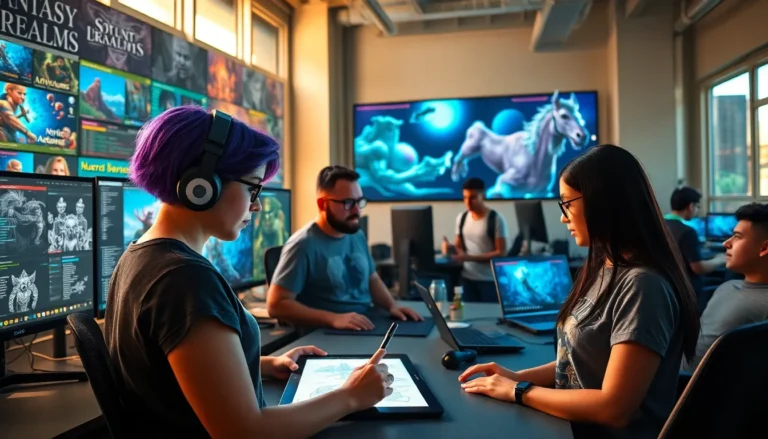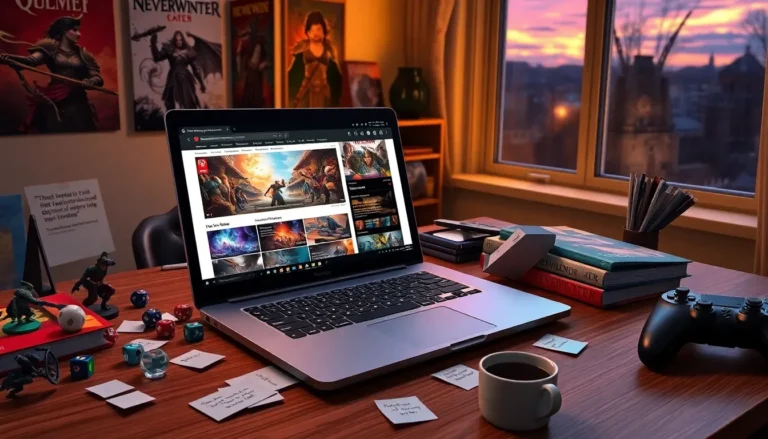Table of Contents
ToggleKids have a knack for turning minor squabbles into epic battles worthy of a blockbuster movie. Whether it’s over a toy, a snack, or the last slice of pizza, conflict is as inevitable as bedtime. But fear not! Teaching kids how to resolve these disputes can turn those dramatic moments into valuable life lessons.
Imagine a world where kids handle their disagreements with the finesse of seasoned diplomats instead of throwing tantrums like tiny tornadoes. With the right tools and guidance, they can learn to communicate effectively and find solutions that leave everyone feeling like winners. Get ready to discover fun and engaging strategies that will help your little ones navigate their social landscape with confidence and grace. After all, who wouldn’t want to raise a kid who can negotiate like a pro and charm their way through conflicts?
Understanding Conflict Resolution for Kids
Teaching conflict resolution equips kids with tools to handle disagreements effectively. It’s crucial for developing social skills that promote harmony among peers.
Definition and Importance
Conflict resolution for kids refers to the methods and techniques they use to resolve disputes and disagreements. Effective strategies include communication, empathy, and negotiation. These skills play a vital role in personal development, allowing children to express themselves without resorting to aggression. Conflict resolution fosters emotional intelligence, teaching kids to understand and manage their feelings. Learning these skills at an early age enhances relationship-building and reduces the likelihood of future confrontations. Research indicates that children who master conflict resolution display improved academic performance and higher self-esteem.
Common Types of Conflicts Among Kids
Kids often encounter various conflicts, each requiring different resolution approaches. Disagreements over toys arise frequently, as children learn to share and compromise. Arguments about personal space also occur, especially when children play in confined areas. Rivalry among siblings often leads to conflicts, highlighting the need for mediation skills. Misunderstandings based on communication barriers can lead to hurt feelings. Conflicts regarding turn-taking in games require patience and negotiation. Recognizing these types of conflicts enables caregivers to intervene early and guide children toward effective resolutions.
Techniques for Teaching Conflict Resolution

Teaching conflict resolution involves practical techniques that engage children effectively. Scenarios such as role-playing and promoting active listening play pivotal roles in this learning process.
Role-Playing Scenarios
Role-playing scenarios provide children with opportunities to act out conflicts and resolutions. She creates a safe environment where kids can practice different roles during a dispute. Children can experience perspectives by switching roles, fostering empathy and understanding. Engaging in these scenarios helps them discover alternative solutions without real-life stress. Facilitators can present common situations like sharing toys or handling disagreements to guide the role-play. Repetitive practice of these scenarios can build confidence and enhance problem-solving skills.
Promoting Active Listening
Promoting active listening enhances children’s ability to understand each other’s feelings. It encourages them to pay full attention during conversations, validating emotions expressed. Techniques like using open-ended questions allow kids to explore their thoughts. She teaches children to reflect back what they hear, which strengthens comprehension. Creating activities that emphasize listening, such as storytelling or group discussions, can cultivate this skill. Active listening not only resolves conflicts but also improves relationships among peers. Maintaining eye contact and nodding reinforces engagement and shows they value the other person’s perspective.
Benefits of Conflict Resolution Skills
Conflict resolution skills offer numerous advantages for children, enhancing their overall development and interactions with peers. These benefits include improved social skills and enhanced emotional intelligence.
Improved Social Skills
Children equipped with conflict resolution skills exhibit stronger social skills. They learn to communicate effectively with others, fostering positive interactions. It becomes easier for them to express their ideas and feelings clearly. Developing empathy allows kids to understand different perspectives, leading to healthier relationships. Moreover, resolving conflicts reduces tensions, resulting in a more harmonious environment. Engaging in successful resolutions improves teamwork abilities as children collaborate with peers to reach common ground. Ultimately, children with solid conflict resolution skills navigate social situations with confidence.
Enhanced Emotional Intelligence
Conflict resolution enhances emotional intelligence in children. These skills encourage awareness of their emotions and those of others. When children learn to manage their feelings during disagreements, they experience personal growth. They build resilience and adaptability in stressful situations, promoting better coping strategies. Furthermore, understanding emotions helps kids respond appropriately to conflicts, reducing aggressive reactions. This growth leads to deeper connections with peers as they validate feelings and foster trust. Ultimately, enhanced emotional intelligence prepares children for lifelong relational success.
Tools and Resources for Parents and Educators
Numerous tools exist to aid parents and educators in teaching conflict resolution to children. These resources foster understanding and improve communication skills among kids.
Books and Literature
Books provide valuable insights into conflict resolution for children. Titles like “Talk It Out: The Step-by-Step Guide to Problem Solving for Kids” outline effective strategies. Stories that illustrate conflict and solutions engage young readers, making complex ideas relatable. Moreover, popular series such as “The Berenstain Bears” often feature episodes on resolving disputes, offering practical lessons. Parents and educators can use these resources to facilitate discussions about conflicts and resolutions. Additionally, incorporating diverse perspectives through literature enhances empathy, which is essential for effective conflict resolution.
Workshops and Programs
Workshops and programs designed for kids focus on conflict resolution skills. Local community centers frequently offer interactive group sessions where children can practice resolution techniques through role-play. These structured environments encourage cooperation while allowing kids to explore various scenarios. Furthermore, programs in schools often include conflict mediation training, teaching them to navigate disagreements calmly. Training for educators also exists to equip them with tools to support conflict resolution in the classroom. Engaging in these activities helps children build confidence and fosters lasting social skills.
Equipping kids with conflict resolution skills is a vital investment in their social and emotional development. By learning to communicate effectively and empathize with others, children can navigate disagreements with confidence. Engaging techniques like role-playing and active listening not only make learning fun but also reinforce essential problem-solving abilities.
As they practice these skills, kids build stronger relationships and foster a more harmonious environment. The resources available for parents and educators further enhance this learning journey, ensuring that children are well-prepared for the challenges of social interactions. Ultimately, developing conflict resolution skills paves the way for lifelong success in relationships and personal growth.



